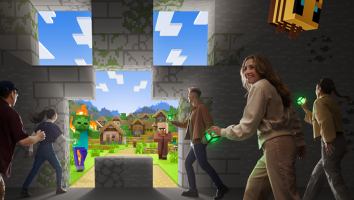When producer Leah Mallen of Vancouver’s Twofold Films first discovered puppet-based book series Windy & Friends in 2009, she quickly recognized its potential as a stop-motion TV show. The books by writers/designers Robin Mitchell-Cranfield and Judith Steedman follow the adventures of a group of friends —led by dreamy optimist Windy—who solve problems related to their environment.
Given that the children’s entertainment world has its own set of obstacles, Mallen, Mitchell-Cranfield, Steedman and stop-motion animation producer Marc Stevenson (The F Word, Edison & Leo) set their small-screen ambitions aside and chose to launch Windy & Friends as a digital property first.(Canadian government funding backing it in the interactive space was the first to come in.)
With US$732,000 from the Canada Media Fund and Creative BC Digital Development, and a pact with Vancouver-based kids app developer Loud Crow Interactive (Charlie Brown Thanksgiving, Busytown Mysteries) secured, Twofold launched 10 Windy & Friends storybook apps. The brand went on to earn two consecutive Kidscreen Awards for Best Learning App in 2015 and 2016, as well as nearly 200,000 combined downloads and banner features on the Apple Store for every release.
As the property found a larger audience, Mallen decided it was time to reconsider a Windy & Friends TV series. She teamed up with Vancouver studio Kickstart Entertainment (Ready Jet Go!, Bottersnikes & Gumbles), and Windy took off. “We decided to put things into a CGI environment to give us a bit more flexibility in terms of how the characters move and the show’s budget,” says Mallen.
The added flexibility, however, also created challenges, according to Kickstart head of production Heather Puttock. “We had to figure out how to adapt these beautiful stop-motion stories on a lower, more producible budget in CGI, but still make it look tactile and have all the charm and essence of the books and the apps,” she says. “We also had to determine how to add mouths to characters that hadn’t had mouths before. Would they move? Would they be 2D or 3D?”
They’re still exploring their options. “Mouths draw you in to the characters more, but we don’t want to change the look too much,” adds Mallen. To help replicate the stop-motion look of the apps, full 3D scans of the physical dolls from the apps were completed and brought into CGI modelling.
With animation development underway, the creative team brought writer Jennica Harper (Reboot, Mr. Young, Some Assembly Required) into the mix in January. Looking ahead, the producers expect to take the project to Annecy in June, where they will search for potential co-production partners and raise more development funding to jumpstart the scriptwriting process. “Heather made some great in-roads and connections at Kidscreen Summit this year, so we might go into the UK or Europe with the project,” says Mallen.





















